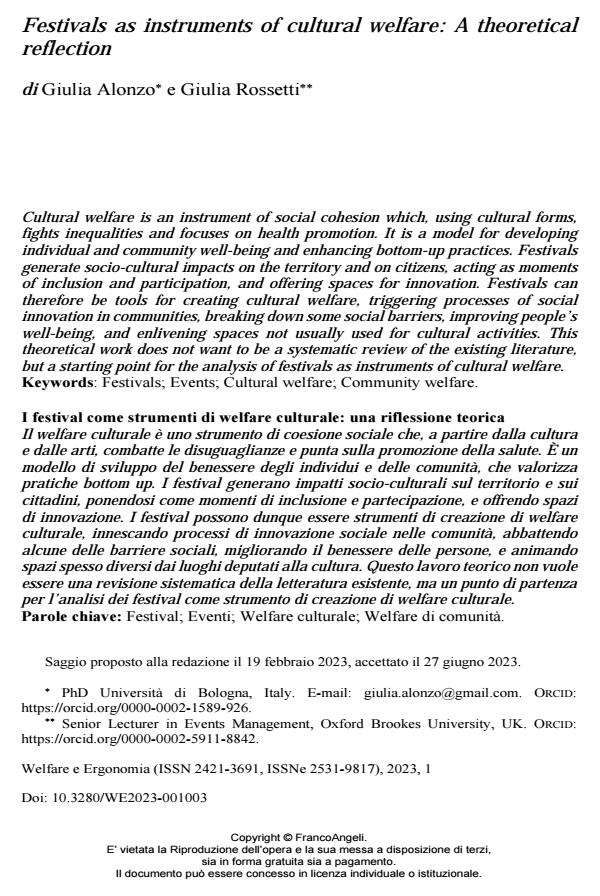Festivals as instruments of cultural welfare: A theoretical reflection
Journal title WELFARE E ERGONOMIA
Author/s Giulia Alonzo, Giulia Rossetti
Publishing Year 2023 Issue 2023/1
Language English Pages 14 P. 25-38 File size 370 KB
DOI 10.3280/WE2023-001003
DOI is like a bar code for intellectual property: to have more infomation
click here
Below, you can see the article first page
If you want to buy this article in PDF format, you can do it, following the instructions to buy download credits

FrancoAngeli is member of Publishers International Linking Association, Inc (PILA), a not-for-profit association which run the CrossRef service enabling links to and from online scholarly content.
Cultural welfare is an instrument of social cohesion which, using cultural forms, fights inequalities and focuses on health promotion. It is a model for developing individual and community well-being and enhancing bottom-up practices. Festivals generate socio-cultural impacts on the territory and on citizens, acting as moments of inclusion and participation, and offering spaces for innovation. Festivals can therefore be tools for creating cultural welfare, triggering processes of social innovation in communities, breaking down some social barriers, improving people’s well-being, and enlivening spaces not usually used for cultural activities. This theoretical work does not want to be a systematic review of the existing literature, but a starting point for the analysis of festivals as instruments of cultural welfare.
Keywords: Festivals; Events; Cultural welfare; Community welfare
- Cultural gene characterization and mapping of traditional tibetan village landscapes in Western Sichuan, China Ding Fan, Nor Zarifah Binti Maliki, Chuan He, Yu Bi, Siwei Yu, in npj Heritage Science 317/2025
DOI: 10.1038/s40494-025-01877-7
Giulia Alonzo, Giulia Rossetti, Festivals as instruments of cultural welfare: A theoretical reflection in "WELFARE E ERGONOMIA" 1/2023, pp 25-38, DOI: 10.3280/WE2023-001003